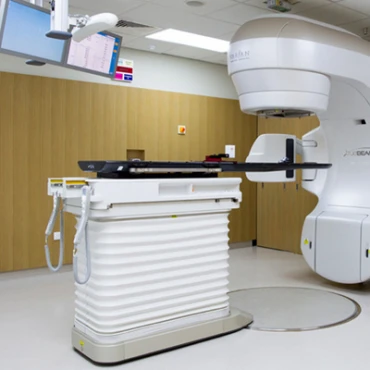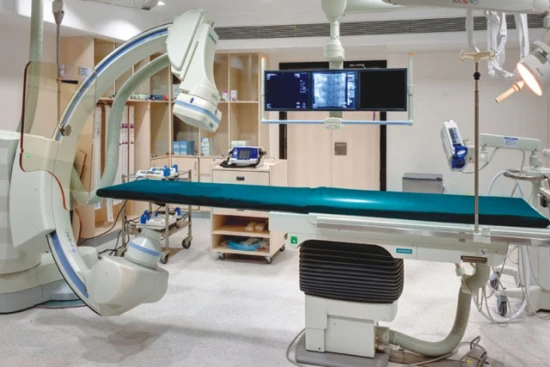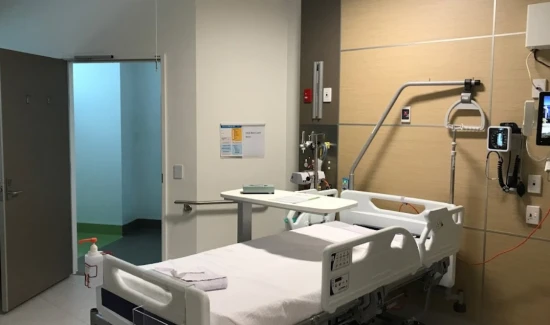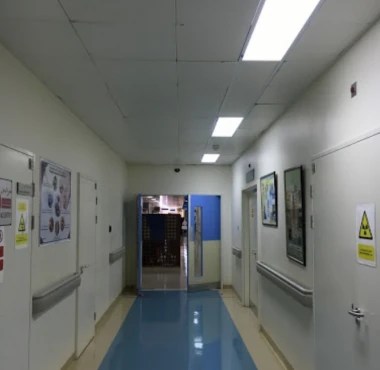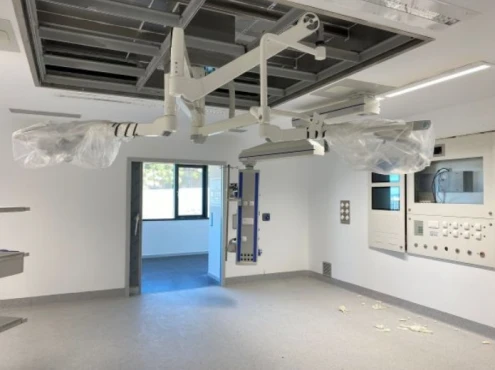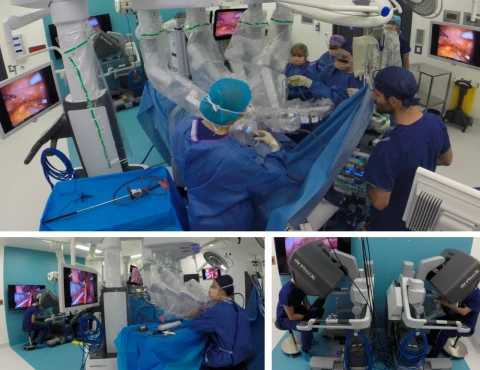Disease Types
What is the aplastic anemia?
Aplastic anemia is a rare, non-cancerous condition where the stem cells in the bone marrow are attacked and destroyed by the patient's immune system.
The reason for this autoimmune reaction is often unexplained. More than half of patients who develop aplastic anemia don't know why their immune system reacts this way. Aplastic anemia can develop after a viral infection or exposure to certain chemicals or radiation. Genetic defects responsible for blood cell production may also affect some people.
The stem cells in the bone marrow give rise to all types of blood cells. However, the damaged stem cells cannot produce enough normal blood cells in those with aplastic anemia. The bone marrow in aplastic anemia patients appears empty or sparsely populated when it's normally full of cells.
In healthy bone marrow, the blood-forming stem cells divide to replicate more stem cells or mature into red, white, or platelet cells. Aplastic anemia is an abnormality in the bone marrow stem cells that prevents them from producing sufficient levels of each blood cell type. It is distinct from leukemia, where an abnormality causes a single blood cell type to proliferate excessively.
When aplastic anemia was first discovered, the low red blood cell levels were the initial symptom noticed, giving it the name 'anemia.' However, further research showed that most patients also had low platelet and white blood cell counts, leading to the term 'aplastic,' which means failure to function normally.
Aplastic anemia is rare, affecting around two people per million per year in the UK. In Europe, the incidence is 2-3 per million, while in Asia, it's higher at 5.67 per million. Patients typically develop it around 60, though it can occur at any age, with minor peaks in adolescence and over 60 [NIH, 2024].
Causes & Risk Factors
What is the primary issue of aplastic anemia?
Substantial evidence indicates that in aplastic anemia, the patient's immune system mistakenly attacks and damages the stem cells in the bone marrow, with the patient's T-lymphocytes playing a pivotal role in this autoimmune response. This immune-mediated destruction of the stem cells can occur after a viral infection or exposure to certain environmental toxins or chemicals. Aplastic anemia can also develop in individuals with inherited genetic defects that affect blood cell production. However, the specific trigger for the autoimmune process remains unknown in most cases.
Inherited or acquired forms of aplastic anemia commonly develop during the first decade of life but can occasionally occur in adulthood. Inherited AA is caused by a genetic defect present since birth, which may have been passed down from one or both parents.
In most cases of acquired AA, no clear triggering event prompts the immune system to attack and damage the bone marrow stem cells. This is why acquired AA is sometimes called idiopathic or primary acquired AA. Acquired AA is less common in children compared to adults.
In a small number of patients, acquired AA is linked to exposure to environmental toxins such as high-dose radiation or harmful chemicals. Other potential triggers include certain medications like antibiotics, anti-inflammatory drugs, and penicillamine, as well as contact with animal fertilizers or agricultural pesticides.
In rare instances, viral infections have also been identified as a potential initiator of AA. In these cases, the immune system becomes misdirected, and its response to the virus damages the blood-forming stem cells.
Clinical Manifestation & Symptoms
What signs should one anticipate while suspecting aplastic anemia?
Patients with acquired AA may have any of the following symptoms or signs according to which blood cells are at shallow levels:
Low levels of red blood cells:
• Fatigue, tiredness and weakness
• Low energy levels
• Shortness of breath, light-headedness and palpitations
Low levels of white blood cells predispose to infections: low white cell counts - neutropenia - require urgent treatment:
• Fever
• Cough, colds, and chest infections
• Urinary tract infections
• Sore mouth, including ulcers
Low levels of platelets: severe bleeding is uncommon, but it requires urgent treatment:
• Bruising of the skin
• Nosebleeds
• Bleeding gums
• Vision problems due to bleeding in the retina
• Bleeding from the gastrointestinal tract (anywhere along the gut passages) and the brain
Diagnostic Route
When, where, and how should aplastic anemia be detected?
Diagnosing acquired aplastic anemia is a process of elimination [British Society for Haematology, 2024]. All other potential causes of bone marrow failure must be ruled out. The diagnostic tests involved include:
- Complete blood count measures the numbers of red cells, different types of white cells, and platelets.
- Blood film examination. The blood is spread on a microscope slide, and the cells are examined. In many patients with acquired AA, the red blood cells, neutrophils, and platelets are decreased, but the lymphocytes are usually normal.
- Bone marrow biopsy. A sample of bone marrow is taken from the hip using local anesthesia and special biopsy needles. This biopsy is essential for diagnosis and will show an empty or sparse marrow containing primarily fat cells.
- Gene mutation tests. Blood or bone marrow may be tested for mutations to exclude inherited AA and identify any somatic mutations related to external factors. The most common somatic mutations in acquired AA involve the PIGA, ASXL1, BCOR, and DNMT3A genes.
Treatment Approaches
What are the options for managing aplastic anemia?
For all patients with acquired AA, the possible cause should always be sought, particularly in the case of a drug the patient may be taking or exposure to fertilizers or pesticides. The suspected cause should be removed immediately.
Treatment of patients with acquired AA aims to:
- replace or renew the depleted stem cell pool;
- control the damage to bone marrow stem cells;
- stimulate the remaining bone marrow stem cells;
- provide supportive treatment for anemia, bleeding, or infections.
The guidelines for acquired AA recommend allogeneic stem cell transplantation or immunosuppressive therapy as initial treatment.
An allogeneic stem cell transplant can help restore the bone marrow using stem cells from a donor. The healthy stem cells are given intravenously, where they migrate to the bone marrow, populate it, and start forming new blood cells. After the transplant, the patient will receive drugs to help prevent rejection of the donated stem cells.
Immunosuppression involves using drugs, such as anti-thymocyte globulin, cyclosporin, and alemtuzumab, to control the immune system and reduce the damage to marrow stem cells. Anti-thymocyte globulins are antibodies directed against T-cells that drive the autoimmune response, removing the T-lymphocytes responsible for causing acquired AA. Cyclosporin and alemtuzumab are common immunosuppressive drugs used to help prevent organ rejection in transplant patients. It stops the T-lymphocytes from being activated and prevents organ rejection.
Immunosuppressive therapy can be an effective treatment, improving the quality of life for patients with acquired AA. While few show a complete response, about 70% of the patients will respond partially and see improvements in their blood counts and symptoms, reducing the need for blood transfusions and the risk of infection or bleeding episodes.
Prognosis & Follow-up
How does cutting-edge science improve the lifespan and quality of life for those with aplastic anemia?
Significant advancements in treatment options have substantially improved the prognosis for patients with aplastic anemia. The five-year survival rate for those who undergo stem cell transplantation exceeds an impressive 90%.
However, long-term outcomes are influenced by factors such as the patient's age, disease severity at diagnosis, and response to initial therapy. Ongoing monitoring is critical to detect any relapse or complications, including progression to other hematological disorders like myelodysplastic syndrome or acute myeloid leukemia.
Regular blood tests and periodic bone marrow assessments are essential to the comprehensive follow-up protocol, ensuring optimal care and management for these patients.

